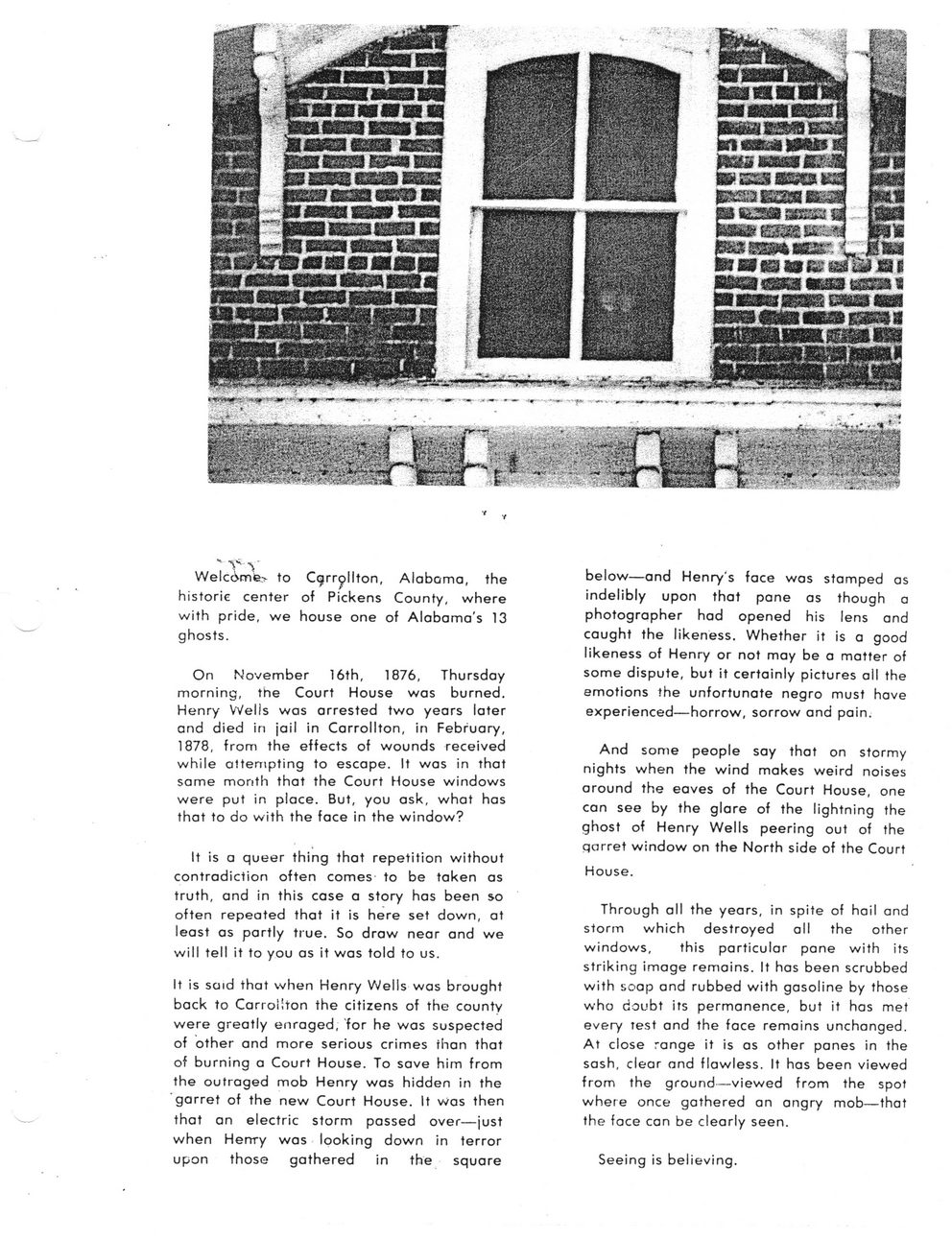This text was obtained via automated optical character recognition.
It has not been edited and may therefore contain several errors.
' V V Welcimfe> to Cgrrpllton, Alaboma, the historic center of Pickens County, where with pride, we house one of Alabama's 13 ghosts. On November 16th, 1876, Thursday morning, the Court House was burned. Henry Wells was arrested two years later and died in jail in Carrollton, in February, 1878, from the effects of wounds received while attempting to escape. It was in that same month that the Court House windows were put in place. But, you ask, what has that to do with the face in the window? It is a queer thing that repetition without contradiction often comes to be taken as truth, and in this case a story has been so often repeated that it is here set down, at least as partly true. So draw near and we will tell it to you as it was told to us. It is said that when Henry Wells was brought back to Carrollton the citizens of the county were greatly enraged, for he was suspected of other and more serious crimes than that of burning a Court House. To save him from the outraged mob Henry was hidden in the garret of the new Court House. It was then that an electric storm passed over?just when Henry was looking down in terror upon those gathered in the square below?and Henry's face was stamped as indelibly upon that pane as though a photographer had opened his lens and caught the likeness. Whether it is a good likeness of Henry or not may be a matter of some dispute, but it certainly pictures all the emotions the unfortunate negro must have experienced?horrow, sorrow and pain. And some people say that on stormy nights when the wind makes weird noises around the eaves of the Court House, one can see by the glare of the lightning the ghost of Henry Wells peering out of the garret window on the North side of the Court House. Through all the years, in spite of hail and storm which destroyed all the other windows, this particular pane with its striking image remains. It has been scrubbed with soap and rubbed with gasoline by those who doubt its permanence, but it has met every rest and the face remains unchanged. At close range it is as other panes in the sash, clear and flawless. It has been viewed from the ground?viewed from the spot where once gathered an angry mob?that the face can be clearly seen. Seeing is believing.

Amish 33